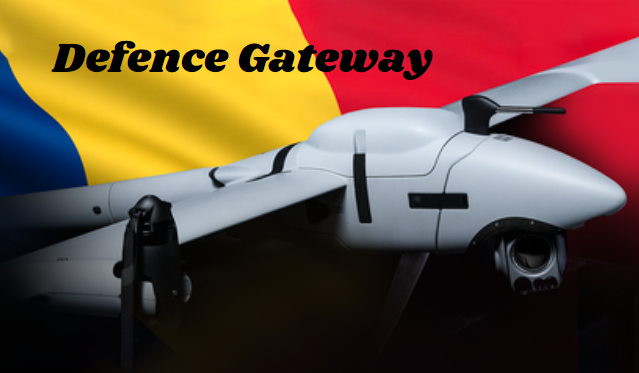Introduction
In a world that is increasingly interconnected, the ability to communicate across language barriers is more vital than ever. Whether it’s for business, travel, or personal relationships, translation serves as a crucial tool for facilitating understanding and collaboration between different cultures.
The Swedish word “pöversätt,” which means translation, encapsulates this essential function. This comprehensive guide will explore the concept of pöversätt in depth, providing unique insights, interpretations, and analyses that surpass existing online sources.
What is Pöversätt?
Pöversätt, derived from Swedish, directly translates to “translation” in English. This term encompasses the process of converting text or speech from one language to another while preserving meaning, tone, and context. Pöversätt plays a significant role in various domains, including literature, business, education, and technology.
The Importance of Pöversätt in a Globalized World
Enhancing Cross-Cultural Communication
One of the primary purposes of pöversätt is to bridge the communication gap between different linguistic groups. By translating texts and conversations, pöversätt enables people from diverse backgrounds to share ideas, collaborate on projects, and build meaningful relationships.
Facilitating International Business
In the business world, pöversätt is indispensable. Companies that operate internationally rely on accurate translations to communicate with clients, partners, and employees who speak different languages. This includes translating contracts, marketing materials, product descriptions, and user manuals.
Promoting Education and Knowledge Sharing
Pöversätt also plays a crucial role in education and academia. By translating academic papers, textbooks, and educational resources, pöversätt makes knowledge accessible to a broader audience. This helps in the dissemination of research findings and educational content across linguistic boundaries.
The Evolution of Pöversätt: From Manual to Digital
Traditional Methods of Translation
Historically, translation was a manual process carried out by bilingual individuals who had a deep understanding of both the source and target languages. This method, although accurate, was time-consuming and limited in scope.
The Advent of Machine Translation
The advent of digital technology brought significant advancements in pöversätt. Machine translation tools like Google Translate and Microsoft Translator use algorithms and large datasets to provide instant translations. While these tools have improved over time, they often struggle with nuanced language and cultural contexts.
The Rise of AI and Neural Networks
Recent developments in artificial intelligence (AI) and neural networks have revolutionized pöversätt. AI-powered translation tools can now understand context, idiomatic expressions, and cultural nuances, resulting in more accurate and natural translations. These tools learn and improve over time, providing better results with each use.
Key Considerations in Pöversätt
Accuracy and Context
Accurate translation requires a deep understanding of both the source and target languages. Context plays a crucial role in ensuring that the translated text conveys the intended meaning. This includes considering cultural references, idioms, and tone.
Cultural Sensitivity
Effective pöversätt goes beyond literal translation. It involves adapting the content to fit the cultural context of the target audience. This ensures that the message is not only understood but also resonates with the readers or listeners.
Confidentiality and Security
In many cases, the content being translated contains sensitive information. Ensuring the confidentiality and security of this information during the pöversätt process is paramount. This is particularly important in legal, medical, and business translations.
Applications of Pöversätt in Various Domains
Literature and Publishing
Pöversätt plays a vital role in the world of literature and publishing. Translating novels, poetry, and non-fiction works allows authors to reach a global audience. It also enriches readers’ experiences by providing access to diverse literary traditions and perspectives.
Legal and Medical Translation
In the legal and medical fields, accurate pöversätt is critical. Legal documents such as contracts, patents, and court rulings require precise translation to avoid misunderstandings and ensure compliance with local laws. Similarly, medical translations must be accurate to ensure patient safety and effective treatment.
Technology and Software Localization
As software and technology companies expand globally, pöversätt becomes essential for localization. This involves translating user interfaces, documentation, and support materials to make them accessible to users in different regions. Localization also includes adapting content to meet local regulations and cultural preferences.
Challenges in Pöversätt
Linguistic Complexity
Languages vary widely in their grammar, syntax, and vocabulary. Some concepts may not have direct equivalents in other languages, making translation challenging. Pöversätt professionals must navigate these complexities to produce accurate and meaningful translations.
Maintaining Consistency
Consistency is crucial, especially in large translation projects. Using standardized terminology and maintaining a consistent tone and style throughout the translated content ensures coherence and clarity. Translation memory tools can help achieve this by storing and reusing previously translated segments.
Handling Ambiguity
Ambiguity in the source text can pose significant challenges for pöversätt. Translators must interpret ambiguous phrases correctly to convey the intended meaning. This often requires consulting with subject matter experts or seeking clarification from the original author.
The Future of Pöversätt: Trends and Innovations
Real-Time Translation
Real-time translation technology is rapidly advancing, offering new possibilities for instant communication. Tools like Google Assistant and Microsoft’s Skype Translator enable real-time voice and text translation, breaking down language barriers in real-time conversations.
Integration with Augmented Reality (AR) and Virtual Reality (VR)
The integration of pöversätt with AR and VR technologies holds exciting potential. For instance, AR glasses could provide real-time subtitles for spoken language, enhancing communication in multilingual settings. VR environments could offer immersive language learning experiences, making it easier to master new languages.
Improved Accessibility
Future advancements in pöversätt are expected to improve accessibility for people with disabilities. This includes better text-to-speech and speech-to-text capabilities, as well as more accurate sign language translation tools.
Best Practices for Effective Pöversätt
Collaboration with Native Speakers
Working with native speakers of the target language ensures that the translation is culturally relevant and linguistically accurate. Native speakers can provide valuable insights into local customs, idioms, and expressions.
Use of Translation Tools
Modern translation tools, including computer-assisted translation (CAT) software and translation memory systems, can enhance efficiency and consistency. These tools help manage large projects, maintain terminology consistency, and reduce turnaround times.
Continuous Learning and Improvement
The field of pöversätt is constantly evolving. Staying updated with the latest trends, tools, and best practices is essential for translation professionals. Continuous learning and professional development help translators improve their skills and adapt to new challenges.
FAQs About Pöversätt
What is the difference between translation and interpretation?
Translation involves converting written text from one language to another, while interpretation deals with spoken language. Both require different skill sets and are used in different contexts.
How can I ensure the quality of a translation?
Ensuring quality involves working with professional translators, using translation tools, and conducting thorough reviews. Collaboration with native speakers and subject matter experts can also enhance accuracy.
Are machine translation tools reliable?
Machine translation tools have improved significantly but still have limitations. They are useful for basic translations and understanding general content but may struggle with complex texts and cultural nuances. Professional translation is recommended for high-stakes or specialized content.
What is localization, and how is it different from translation?
Localization goes beyond translation by adapting content to fit the cultural and regulatory context of the target audience. This includes translating text, adjusting images, colors, and formats, and ensuring that the content meets local standards and preferences.
How can I become a professional translator?
Becoming a professional translator typically requires fluency in at least two languages, a deep understanding of cultural contexts, and specialized training in translation techniques. Many translators hold degrees in translation studies or related fields and gain experience through internships or freelance work.
Conclusion
Pöversätt, the Swedish word for translation, represents a vital process in our interconnected world. By enabling cross-cultural communication, facilitating international business, and promoting knowledge sharing, pöversätt plays a crucial role in various domains.
As technology advances, the field of pöversätt continues to evolve, offering new tools and possibilities for more accurate and efficient translations. By understanding the complexities and challenges of pöversätt, we can better appreciate its importance and strive for more effective and meaningful translations.





















+ There are no comments
Add yours